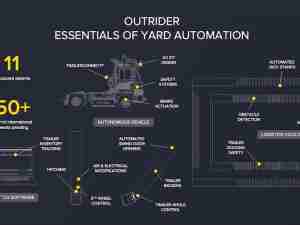Shuster & Graves statements from markup of the Surface Transportation Reauthorization and Reform Act
posted by AJOT | Oct 22 2015 at 11:59 AM | Intermodal
Shuster and Graves Opening Statements
Full Committee Markup of the Surface Transportation Reauthorization and Reform Act of 2015
October 22, 2015
(Remarks as Prepared)
Chairman Bill Shuster (R-PA)
Committee on Transportation and Infrastructure
Today we are considering H.R. 3763, the Surface Transportation Reauthorization and Reform Act of 2015 – the STRR Act.
One of my top priorities when I became Chairman of this committee was to move forward with a bill for our roads, bridges, and transit systems – a bill that provides multi-year certainty for states and local governments to address our surface transportation needs.
I am proud that we were able to work together and find common ground on this important bipartisan legislation. This bill was developed with Subcommittee Chairman Graves, Ranking Member DeFazio and Ranking Member Norton, and includes input from both sides of the aisle and the stakeholder community. I appreciate everyone’s efforts to get us to this point.
The STRR Act is fiscally responsible and authorizes federal surface transportation programs for six years. The provisions in this bill improve our Nation’s infrastructure, reform our surface transportation programs, refocus these programs on national priorities, promote innovation to make our surface transportation system and programs work better, maintain a strong commitment to safety, provide greater flexibility for states and local governments to address their needs, streamline the federal bureaucracy and accelerate project delivery, and facilitate the flow of freight and commerce.
Today we take a critical step forward to put these principles in to practice.
Our surface transportation system is one of the pillars of our economy. A safe, efficient network of roads, bridges, and public transit means that we spend less time in traffic, transportation costs for goods and services remain lower, and more jobs are created throughout the economy.
That’s what this bill does in a way that I believe ensures a strong and appropriate federal role in surface transportation, enables our country to remain competitive, and improves Americans’ quality of life.
I look forward to moving forward in Committee today, bringing this bill before the House, and going to conference with the Senate.
Chairman Sam Graves (R-MO)
Subcommittee on Highways and Transit
The Surface Transportation Reauthorization and Reform Act reauthorizes programs within the Federal Highway Administration and provides for some much needed investments in our nation’s highways and bridges.
The bill focuses existing funding to create a Nationally Significant Freight and Highway Projects program for large-scale projects.
It also includes a number of reforms to streamline the environmental review and permitting process; convert the Surface Transportation Program to a block grant program, maximizing the flexibility for states and local governments; increase the amount of funding that is distributed to local governments; expand funding available for rural bridges, or those off the National Highway System; increase transparency regarding how federal highway dollars are being spent; increase the focus on road safety infrastructure, and on the safety needs of rural roads; and encourage the installation of vehicle-to-infrastructure equipment designed to reduce congestion and improve safety.
This legislation also reauthorizes federal public transportation programs and implements reforms that will ensure transit systems are safer and more efficient.
Specifically, it provides a competitive grant option to address bus and bus facility needs, consolidates Federal Transit Administration research programs to increase efficiency and accountability, provides for the coordination of public transportation services to aid in the mobility of seniors and individuals with disabilities, offers greater flexibility to states to partner with inter-city bus providers to support greater rural mobility, and also helps strengthen transit safety measures.
To be clear, improving safety should be our top priority during reauthorization. By giving states the flexibility to spend more funding on the safety needs unique to each community, promoting programs that increase driver awareness of commercial motor vehicles, and incentivizing the adoption of innovative truck and bus safety technologies, we can work with states to take advantage of new technologies that limit accidents and fatalities across the country.
And we can maintain a focus on safety without imposing undue and duplicative regulatory burdens on states. This bill requires the Federal Motor Carrier Safety Administration to review regulations every five years to ensure they are current, consistent, and uniformly enforced, allowing us to focus on policies that save lives and abandon those that do not. It also requires FMCSA to look into the effects of raising minimum insurance standards for truck and bus drivers.
Finally, the bill ensures that the Pipeline and Hazardous Materials Safety Administration cannot impose user fees on the industry, reforms the Hazardous Materials Safety Permit program, withdraws the administration’s harmful wet line rule, and extends the Positive Train Control deadline for another three years.
I am proud to have been a part of the development of this bipartisan bill, and I look forward to working with my colleagues as we continue with this process.







